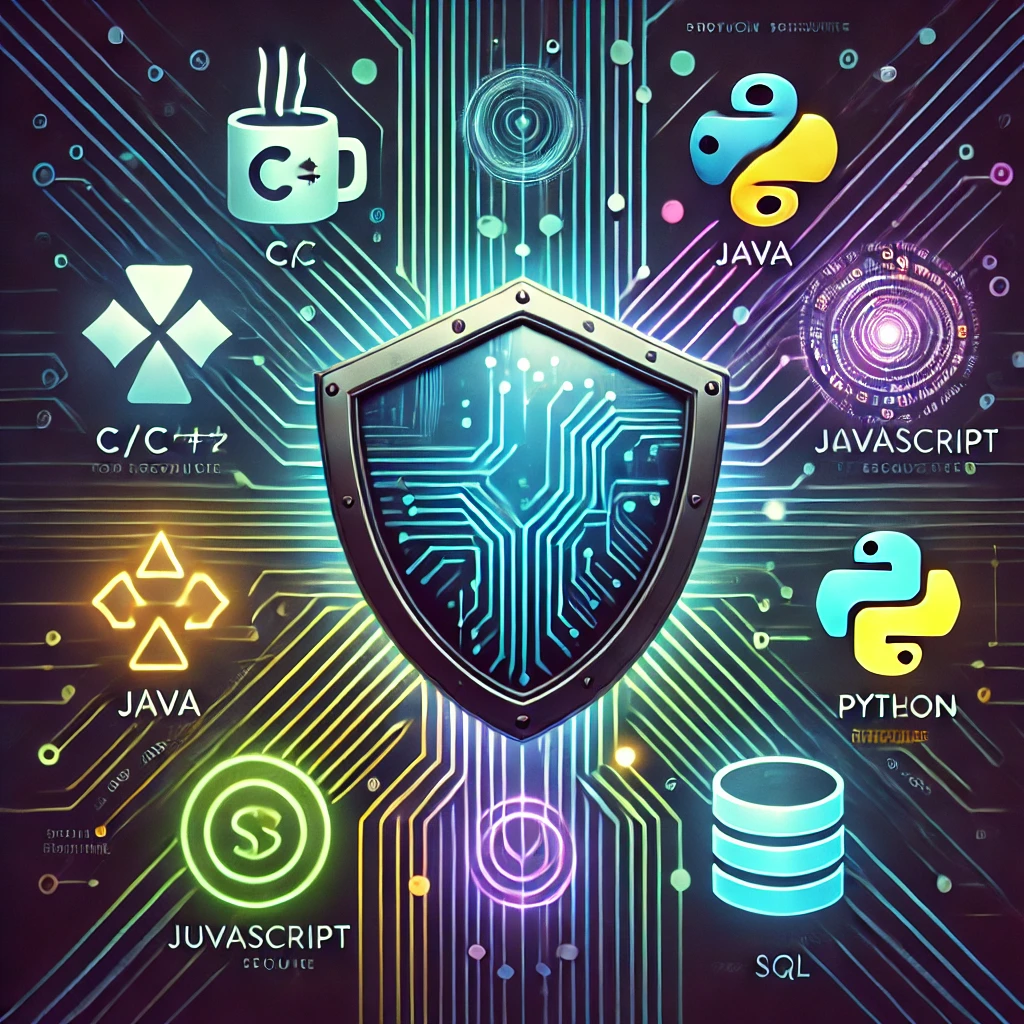Continuing our discussion on software development security, as addressed in the article “Security in Software Development: Controls That Make a Difference“, let’s now explore the inherent risks in programming languages and practical strategies to mitigate them.
When developing software, it’s easy to focus solely on functionality and product delivery. However, the inherent risks of programming languages must also be carefully evaluated to ensure system security and efficiency. In this article, we explore the main risks associated with some of the most widely used programming languages and discuss practical strategies to mitigate them.
Introduction
In the software development universe, the choice of programming language can directly impact the security, performance, and reliability of applications. Each language has its own peculiarities, and the risks vary from memory issues to vulnerabilities in web interfaces. Understanding these nuances is essential for development and security teams to implement best practices and keep their systems protected.

Key Risks by Programming Language
C and C++: Memory Challenges
Languages like C and C++ are widely used in operating systems, graphics, and game development due to their high performance and direct hardware control. However, these advantages come with specific risks:
- Buffer Overflows: The lack of strict data size verification can allow data to exceed buffer limits, compromising memory and facilitating attacks.
char destination[10];
strcpy(destination, "This string is too long"); // The string exceeds the buffer size- Memory Leaks: Poor management of memory allocation and deallocation can lead to leaks, affecting system performance and stability.
for (int i = 0; i < 1000; i++) {
int *array = malloc(100 * sizeof(int));
// Process the array...
// Error: no call to free(array)
}Java: Portability and Hardware Dependency
Java is popular for developing enterprise applications and mobile platforms like Android. Among the risks associated with Java are:
- Reliance on Hardware Security: Although Java offers portability through its virtual machine (JVM), it heavily depends on the underlying hardware’s security measures.
- Vulnerabilities in the JVM and Libraries: The Java runtime environment and its libraries can have flaws if not updated regularly, potentially allowing attackers to exploit security gaps.
JavaScript: Front-End Security
Widely used in web development, JavaScript faces challenges common to online applications:
- Cross-Site Scripting (XSS): Injection of malicious scripts can compromise user data and site integrity.
- Cross-Site Request Forgery (CSRF): Attacks that exploit user trust in a website can result in unauthorized actions.
Python: Ease of Use with Hidden Risks
Python is renowned for its simple syntax and readability, making it a popular choice for beginners and professionals alike. However, its ease of use can sometimes mask underlying risks:
- Reliance on Third-Party Modules: Extensive use of external libraries can introduce vulnerabilities, especially if these modules are not regularly updated.
- Data Deserialization: The process of converting data formats can be exploited to inject malicious content if not properly validated.
SQL: Injection Threats
Although SQL isn’t a traditional programming language, it’s indispensable in developing applications that interact with databases. The most notable risk is:
- SQL Injection: Failing to validate input can allow attackers to alter SQL queries, compromising data integrity and system security.
Mitigation Strategies
To minimize the risks associated with programming languages, it is essential to adopt robust security practices throughout the Software Development Life Cycle (SDLC). Here are some effective strategies:
1. Data Validation and Sanitization
- Input Validation: Implement strict rules to ensure that input data matches the expected format.
- Sanitization: Clean and verify all data before processing or storage to prevent malicious content from infiltrating the system.
2. Secure Memory Management
- Use of Garbage Collection Tools: In languages that support it, such as Java and Python, these tools help free unused memory, preventing leaks.
- Best Coding Practices: For C and C++, use libraries and techniques that prevent buffer overflows, such as proper size checks and safe dynamic allocation.
3. Secure Error Handling
- Controlled Error Messages: Avoid displaying sensitive or technical details that could facilitate vulnerability exploitation.
- Secure Logging: Store error information securely for internal analysis without exposing critical data to end users.
4. Rigorous Authentication and Authorization
- Access Control: Ensure that only authorized users can access sensitive system functions.
- Monitoring and Auditing: Establish regular processes for verifying and auditing access, quickly identifying any breaches.
5. Constant Updates
- Maintenance of Libraries and Frameworks: Ensure all dependencies are regularly updated to minimize risks associated with known vulnerabilities.
- Monitoring Routines: Implement periodic log reviews and security update processes, such as checking logs at the start of each day.
6. Collaboration and DevSecOps
- Code Review: Encourage collaboration between development and security teams, allowing multiple sets of eyes to verify the code.
- DevSecOps Integration: Foster a culture where security is integrated from the planning phase through deployment, ensuring that it remains a priority throughout development.
Conclusion
Application security depends not only on the functionalities offered but also on a deep understanding of the risks inherent in each programming language. By adopting practices such as data validation, secure memory management, controlled error handling, stringent access control, and regular updates, your team will be better prepared to face the challenges of today’s digital landscape.
Implementing a culture of collaboration and integrating security into the development cycle (DevSecOps) are fundamental steps in creating more robust and resilient systems. Stay updated on best practices and emerging threats, and make security a constant priority in your development process.



Pingback: Introduction to Programming Languages and Essential Tools - FortShield: Security for Professional Developers